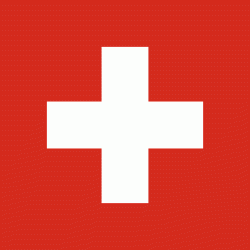Grossaffoltern
Grossaffoltern is a municipality in the Seeland administrative district in the canton of Bern in Switzerland. It is known for its stork colony.
Grossaffoltern is first mentioned in 1216 as Affoltron.
The oldest evidence of humans in the Grossaffoltern area are neolithic objects at Vorimholz, an Early Bronze Age ax blade depot at Munimatte and Bronze Age items at Kosthofen. There are at least 38 Hallstatt era grave mounds scattered around the municipality. The area was also inhabited during the Roman era and the Early Middle Ages. During the Middle Ages it was owned by the House of Zähringen until that family died out, when it was inherited by the Kyburgs. Under the Zähringens and the Kyburgs, during the 13th and 14th centuries, it was part of the district of Oltigen. In 1412, Grossaffoltern and the surrounding villages came under Bernese control. It was originally part of the bailiwick of Oltigen until that was dissolved in 1483, when it became part of the bailiwick of Aarberg allocated. Under the Helvetic Republic, in 1798, Grossaffoltern was in the Zollikofen district before switching back to the Aarberg district in 1803.
The village church of St. Stephen was first mentioned in 1275. The current church building is from 1510 to 1524, though it was built on top of the foundations of two 12th or 13th century churches. The church tower is from the 14th century. In 1383 it was given by Anna of Kyburg-Nidau to the monastery of Klingental near Basel. The monastery sold the church in 1416 to the Abbey of Frienisberg. Under Frienisberg it became the parish church of the local parish in 1451. The parish came under Bernese control in 1528.
Even today, the economy of municipality remains strongly agrarian. In 1835-44 the cantonal road from Bern to Biel/Bienne was built passing through Grossaffoltern. This was followed in 1864 by a railroad and in 1983 by a highway, all of which boosted the local economy. Due to the good transportation connections, starting the 1960s, the number of commuters living in Grossaffoltern rose sharply. In 1967, Grossaffoltern and six surrounding villages merged into a single municipality to streamline government and centralize services.
Grossaffoltern is first mentioned in 1216 as Affoltron.
The oldest evidence of humans in the Grossaffoltern area are neolithic objects at Vorimholz, an Early Bronze Age ax blade depot at Munimatte and Bronze Age items at Kosthofen. There are at least 38 Hallstatt era grave mounds scattered around the municipality. The area was also inhabited during the Roman era and the Early Middle Ages. During the Middle Ages it was owned by the House of Zähringen until that family died out, when it was inherited by the Kyburgs. Under the Zähringens and the Kyburgs, during the 13th and 14th centuries, it was part of the district of Oltigen. In 1412, Grossaffoltern and the surrounding villages came under Bernese control. It was originally part of the bailiwick of Oltigen until that was dissolved in 1483, when it became part of the bailiwick of Aarberg allocated. Under the Helvetic Republic, in 1798, Grossaffoltern was in the Zollikofen district before switching back to the Aarberg district in 1803.
The village church of St. Stephen was first mentioned in 1275. The current church building is from 1510 to 1524, though it was built on top of the foundations of two 12th or 13th century churches. The church tower is from the 14th century. In 1383 it was given by Anna of Kyburg-Nidau to the monastery of Klingental near Basel. The monastery sold the church in 1416 to the Abbey of Frienisberg. Under Frienisberg it became the parish church of the local parish in 1451. The parish came under Bernese control in 1528.
Even today, the economy of municipality remains strongly agrarian. In 1835-44 the cantonal road from Bern to Biel/Bienne was built passing through Grossaffoltern. This was followed in 1864 by a railroad and in 1983 by a highway, all of which boosted the local economy. Due to the good transportation connections, starting the 1960s, the number of commuters living in Grossaffoltern rose sharply. In 1967, Grossaffoltern and six surrounding villages merged into a single municipality to streamline government and centralize services.
Map - Grossaffoltern
Map
Country - Switzerland
 |
 |
| Flag of Switzerland | |
Switzerland is geographically divided among the Swiss Plateau, the Alps and the Jura; the Alps occupy the greater part of the territory, whereas the Swiss population of approximately 8.7 million is concentrated mostly on the plateau, where the largest cities and economic centres are located, including Zürich, Geneva and Basel.
Currency / Language
| ISO | Currency | Symbol | Significant figures |
|---|---|---|---|
| CHF | Swiss franc | Fr | 2 |
| CHE | WIR Bank | 2 | |
| CHW | WIR Bank | 2 |
| ISO | Language |
|---|---|
| FR | French language |
| DE | German language |
| IT | Italian language |
| RM | Romansh language |















